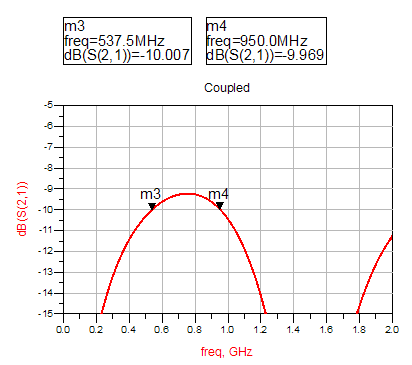kwagjj
Member level 1

for directional couplers which is nothing but two parallel microstrips adjacent to each other, I can't understand why it has to be quarter wavelength.
My guess is that since coupling is merely interacting with the other microstrip through E, H fields, there isn't any need to be quarter wavelength. The longer, then more coupling will occur and more power will be transferred.
But every google search that I look up, it says that directional couplers use quarter wavelength but it doesn't say why. What is wrong with my guess?
My guess is that since coupling is merely interacting with the other microstrip through E, H fields, there isn't any need to be quarter wavelength. The longer, then more coupling will occur and more power will be transferred.
But every google search that I look up, it says that directional couplers use quarter wavelength but it doesn't say why. What is wrong with my guess?


